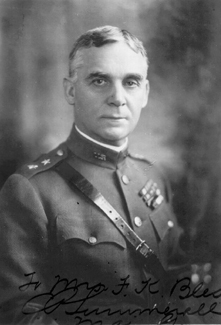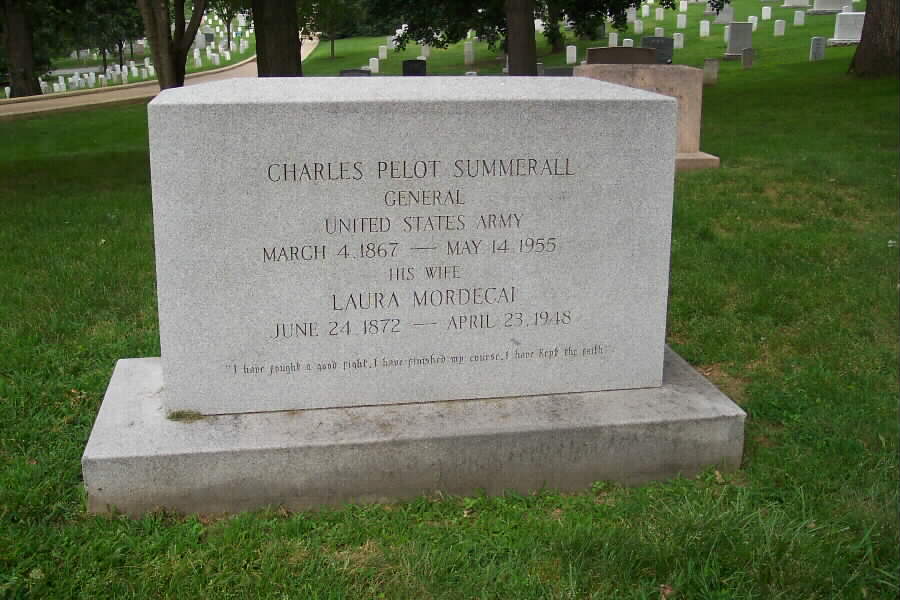“Artillery succeeded where, otherwise, we would have failed.”
–General Charles P. Summerall
Born in Blount’s Ferry, Florida in 1867, Charles Pelot Summerall attended the Porter Military Academy in South Carolina from 1882 to 1885. After graduation, he worked as a school teacher for three years. In 1888 he enrolled in the United States Military Academy at West Point, New York, West Point Military Academy and graduated in June 1892. He was first assigned to the 1st Infantry but transferred to the 5th Artillery in March of 1893.
Charles Summerall fought in the Spanish-American war in 1898. From 1899 to 1900 he fought in the Philippine Insurrection as an Engineer Officer and promoted to 1st Lieutenant. In 1900-1901 he was promoted to Captain and assigned to the 106th Field Artillery while participating in the attack on Peking during the China Relief Expedition at the time of the Chinese Boxer Rebellion.
Charles married Laura Mordecai in August of 1901. His son, Charles Summerall JR., was born in 1902 and eventually retired as a Colonel in the U.S. Army.
From 1905 to 1911, Charles Summerall was the Senior Instructor of Artillery Tactics at West Point. He was promoted to Major in 1911 and put in charge of purchasing land for artillery training on behalf of the U.S. Army. In 1915 he was assigned to investigating the manufacture of munitions to be purchased by the U.S. Army.
Charles Summerall was promoted to Lieutenant-Colonel in 1916, and ‘full bird’ Colonel in 1917. In August of 1917 he was promoted to Brigadier-General in the National Army and National Army Major-General in 1918. In February 1919 he was promoted to Brigadier-General in the Regular Army and Regular Army Major-General in April 1920.
Serving on the front line in France during World War One, Major-General Charles Summerall was Commander of the First Division and later became Commander of the Fifth Corps.
November 21st, 1926 Major-General Summerall became Chief of Staff of the U.S. Army. He was promoted to full (four-star) General in 1929. In November 1930 after 38 years of service, he retired from the U.S. Army.
In 1931 General Summerall took position as President of the Citadel where he stayed for 22 years, retiring in 1953. General Summerall died in Washington D.C. in 1954. He rests at the Arlington National Cemetery – (Section 30 USA S-19) along with his wife Laura (Mordecai) Summerall, son Colonel Charles Pelot Summerall, Jr., and daughter in-law Julia Summerall.
Former Army Chief of Staff
General Charles P. Summerall
Combined Services Full Honor Funeral
14-17 May 1955
General Charles P. Summerall, former Chief of Staff of the Army, died at Walter Reed General Hospital in Washington, D.C., on 14 May 1955 at the age of eighty-eight.
In Department of the Army General Order 33 announcing General Summerall’s death, General Matthew B. Ridgway, Army Chief of Staff, instructed Major General John H. Stokes, Jr., Commanding General, Military District of Washington, to render appropriate funeral honors. In the same order, General Ridgway directed that the national flag at all installations under the control of the department be lowered to half-staff until sunset on the day of General Summerall’s burial.
General Stokes supervised arrangements for a Combined Services Full Honor Funeral, the ceremony authorized for a former Chief of Staff, to take place on 17 May. The funeral service was to be held in the chapel at Fort Myer, and burial was to take place in Arlington National Cemetery following a full procession from the chapel to the gravesite. The gravesite selected was in Section 30, near the graves of William Howard Taft, James V. Forrestal, Admiral Forrest P. Sherman, General Hoyt S. Vandenberg, and General Peyton C. March.
The funeral service was held at 1430 on the 17th. Before that hour, the band and troop units that would later form the escort in the procession to the grave took position outside the Fort Myer Chapel entrance as an honor guard. In the formation were the U.S. Army Band and a company each of Army, Marine Corps, Navy, and Air Force troops. Also included were ten cadets from the military academy in Charleston, South Carolina, The Citadel, some of whom acted as a color guard. General Summerall, after his retirement from the Army in 1931, had served for twenty-two years as president of The Citadel.
When the hearse bearing the casket arrived at the chapel, the honor guard troop presented arms as the band sounded four ruffles and flourishes and played the “General’s March.” The casket was then lifted from the hearse and borne into the chapel by the body bearers from the 3d Infantry, while the band played “Lead Kindly Light.”
Former Army Chief of Chaplains Luther D. Miller, canon of the Washington National Cathedral, conducted the funeral service. With General Summerall’s son, Colonel Charles P. Summerall, Jr., were General of the Army George C. Marshall, General Ridgway, and General Mark W. Clark, who had succeeded General Summerall as president of The Citadel.
At the conclusion of the service, General Summerall’s casket was taken out of the chapel in procession. As the body bearers with the casket reached the chapel doorway, the honor guard presented arms and the band again sounded ruffles and flourishes and played the “General’s March.” While the band played “Nearer My God to Thee,” the casket was borne to the caisson that had been drawn up in front of the chapel and the procession formed.
General Stokes, as escort commander, led the way into the cemetery through the gate adjoining the chapel grounds. The Army Band followed, playing Chopin’s “Funeral March.” Behind the band marched the escort units in a column of companies. Next, in order, were the national color detail, Canon Miller, the caisson flanked by the body bearers, a personal flag bearer, a groom leading a caparisoned horse, the next of kin, and other mourners. As the procession moved, the 3d Infantry battery, from a position in the cemetery, fired a 17-gun salute in slow cadence, timed so that the last round was fired as the procession reached the grave.
After the band, escort troops, and mourners were in position for the graveside rites, the band sounded ruffles and flourishes, played the “General’s March,” and then began the hymn “Safe in the Arms of Jesus.” While the hymn was played, the body bearers, preceded by Canon Miller, carried the casket to the grave. Canon Miller then read the burial service. Following the benediction, the battery fired a second 17-gun salute, this time spacing the rounds at five-second intervals. A firing squad then delivered three volleys, and a bugler sounded taps to conclude the final rites for General Summerall.
SUMMERALL, CHARLES P
- GEN USA RET
- VETERAN SERVICE DATES: Unknown
- DATE OF BIRTH: 03/04/1867
- DATE OF DEATH: 05/14/1955
- DATE OF INTERMENT: Unknown
- BURIED AT: SITE S-16
ARLINGTON NATIONAL CEMETERY
SUMMERALL, LAURA MODECAI W/O CHARLES P
- DATE OF DEATH: 04/23/1948
- DATE OF INTERMENT: 04/27/1948
- BURIED AT: SECTION SPECI SITE 16
ARLINGTON NATIONAL CEMETERY - WIFE OF CP SUMMERALL – GEN U S ARMY RET
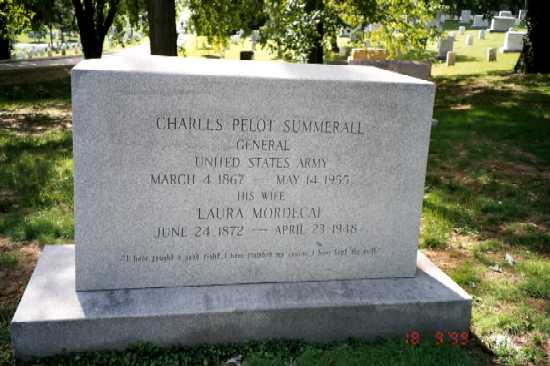
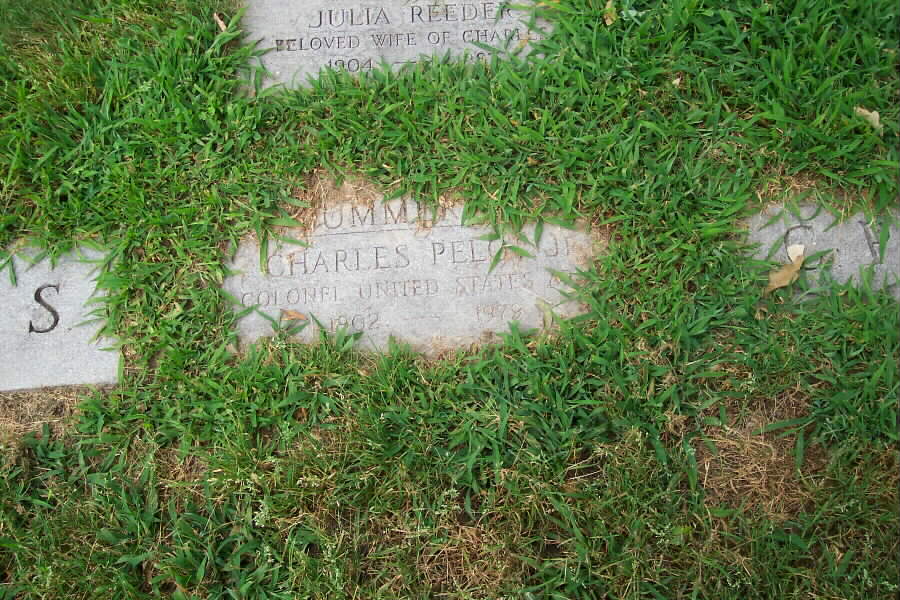
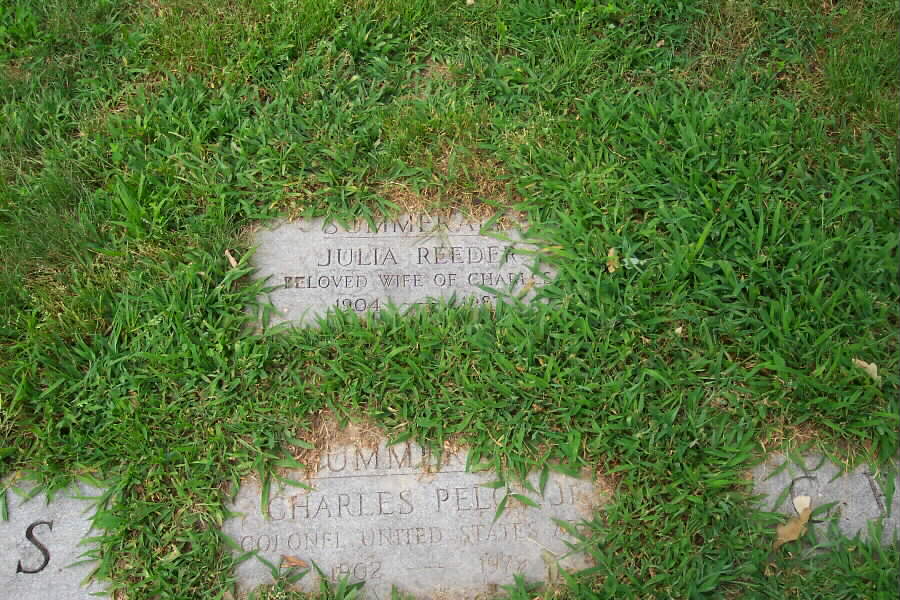
Michael Robert Patterson was born in Arlington and is the son of a former officer of the US Army. So it was no wonder that sooner or later his interests drew him to American history and especially to American military history. Many of his articles can be found on renowned portals like the New York Times, Washingtonpost or Wikipedia.
Reviewed by: Michael Howard

